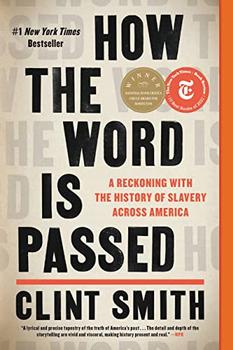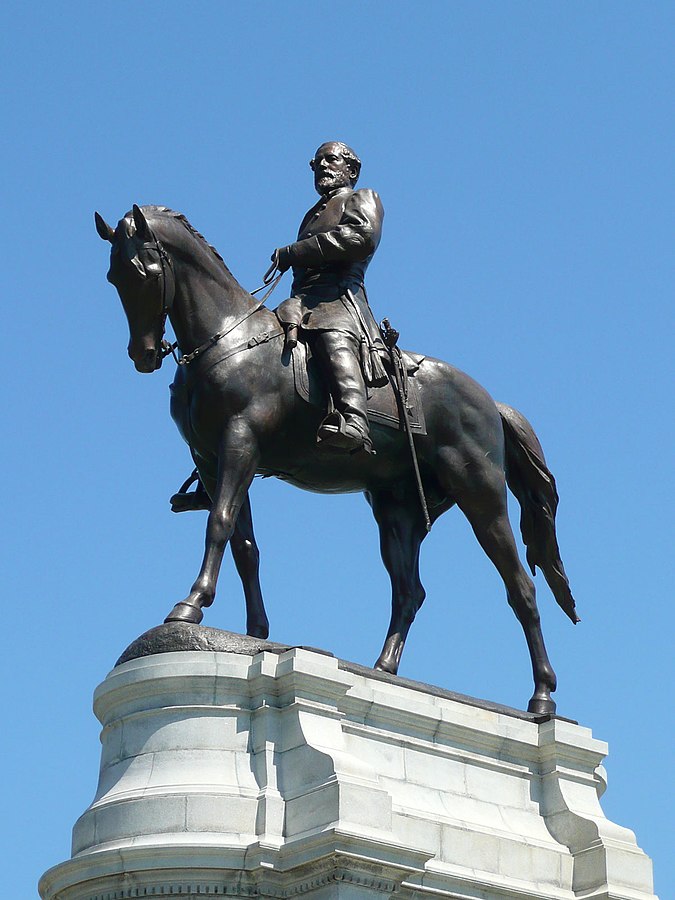Summary | Excerpt | Reading Guide | Reviews | Beyond the Book | Read-Alikes | Genres & Themes | Author Bio

Critics' Opinion:
Readers' Opinion:
First Published:
Jun 2021, 352 pages
Paperback:
Dec 2022, 352 pages
 Book Reviewed by:
Book Reviewed by:
Rose Rankin
Buy This Book
This article relates to How the Word Is Passed
 Following defeat and widespread destruction in the Civil War, people in the former Confederate states set about rebuilding their communities and coping with the enormity of their loss. This effort included physical and psychological measures, such as building cemetery monuments and establishing Confederate Memorial Day to honor fallen soldiers. It also involved the rationalization of defeat in the war, which began taking shape almost immediately following Lee's surrender at Appomattox.
Following defeat and widespread destruction in the Civil War, people in the former Confederate states set about rebuilding their communities and coping with the enormity of their loss. This effort included physical and psychological measures, such as building cemetery monuments and establishing Confederate Memorial Day to honor fallen soldiers. It also involved the rationalization of defeat in the war, which began taking shape almost immediately following Lee's surrender at Appomattox.
First described by the editor of the Richmond Examiner in 1867, the "Lost Cause" myth claimed that slavery was not the issue that drove the conflict, but rather that the South was the victim of Northern aggression and only lost the war because of the North's overwhelming advantage in terms of manpower and industrial might. This mythical interpretation of history also purported that slavery was a benign institution that benefitted slaves, most of whom were happy with the social system. It claimed the war had been fought to preserve states' rights and Southern culture, idealized as loyal and chivalrous, and it portrayed secession as lawful because the Constitution does not specifically prohibit it.
This story allowed Southerners to distance themselves from the moral culpability of fighting to preserve slavery and of rebelling against their government. Accepted in the northern states as well, this myth also justified the North's turning a blind eye to the Jim Crow system and the continuation of white supremacy after emancipation. This fictional interpretation became a major part of the national memory of the Civil War, and while it was invented shortly after the war ended, it gained traction and took more physical forms of expression at the turn of the 20th century.
Whereas cemetery monuments to deceased soldiers had dominated memorial efforts up to about 1890, after that time monuments to unnamed soldiers, Confederate generals, and the Southern civilian population were built extensively across the South in public spaces such as town squares, courthouses and public parks. These monuments often commemorate Lost Cause ideology in text and/or sculptural images.
Examples include the Heyward Shepherd monument, erected in 1931 in West Virginia. This large boulder commissioned by the United Daughters of the Confederacy (UDC) and the Sons of Confederate Veterans (SCV) is currently displayed in a national park. It commemorates the death of Heyward Shepherd, a free Black man killed in John Brown's raid on the federal arsenal at Harper's Ferry in 1859. Although Shepherd was not a slave, his memory was used by white politicians and the white press to justify slavery by claiming Shepherd "was satisfied with his subordinated role in society—a second-class citizen," as Paul Shackel explained in Historical Archaeology. Members of the UDC and SCV chose this story to perpetuate the "faithful slave" myth, a part of Lost Cause ideology that claims slaves were happy and well-cared for by benevolent masters.
Other monuments to the Lost Cause include a large statue of Nathan Bedford Forrest in Memphis, Tennessee (recently removed from its location in a public park), who massacred Union soldiers after they had surrendered and later became the first Grand Wizard of the Ku Klux Klan, as well as statues of Confederate generals and the Confederacy's president, Jefferson Davis. Monument Avenue in Richmond, Virginia, is a particularly salient example, having been built with numerous statues to Confederate leaders, including General Robert E. Lee, in the first 25 years of the 20th century. Construction on Georgia's Stone Mountain Monument, also commissioned by the UDC, began in 1914. It features the faces of Davis, Lee and Stonewall Jackson carved into the edifice of a monadnock mountain.
Following the mass shooting of Black parishioners at Emanuel African Methodist Episcopal Church in Charleston, South Carolina in 2015, communities began reassessing the presence of Confederate monuments, flags and symbols, and the push to remove them gained momentum following the murder of George Floyd in 2020. Many statues and monuments have been forcibly torn down, while others have been removed by municipalities. By early 2021, however, there were still over 700 Confederate monuments across the U.S., with under 200 having been removed in 2020.
The debate over where these monuments should go, or if they should be removed at all, continues to be a divisive issue. This shows that honest appraisals of history remain a struggle, and that the factors that drove people to concoct and accept the Lost Cause myth are still very potent. These factors include an unwillingness to face the violence of slavery and its legacy, an inability to admit that rebellion is traitorous, and a refusal to countenance what this history means for non-white Americans.
The conversation over the Lost Cause myth and the material culture it inspired in monuments across the U.S. is long overdue, and will remain a key component of the country's reckoning with race and history. It shouldn't be shied away from, whether that conversation is about removing a physical statue or how our textbooks describe the Civil War. As Clint Smith explains in How the Word Is Passed, the Lost Cause "was a deliberate, multifaceted, multi-filed effort predicated on both misremembering and obfuscating what the Confederacy stood for, and the role that slavery played in shaping this country."
Robert E. Lee monument on Memorial Avenue in Richmond, VA
Filed under People, Eras & Events
![]() This "beyond the book article" relates to How the Word Is Passed. It originally ran in July 2021 and has been updated for the
December 2022 paperback edition.
Go to magazine.
This "beyond the book article" relates to How the Word Is Passed. It originally ran in July 2021 and has been updated for the
December 2022 paperback edition.
Go to magazine.





The House on Biscayne Bay
by Chanel Cleeton
As death stalks a gothic mansion in Miami, the lives of two women intertwine as the past and present collide.

The Flower Sisters
by Michelle Collins Anderson
From the new Fannie Flagg of the Ozarks, a richly-woven story of family, forgiveness, and reinvention.

The Funeral Cryer by Wenyan Lu
Debut novelist Wenyan Lu brings us this witty yet profound story about one woman's midlife reawakening in contemporary rural China.
Your guide toexceptional books
BookBrowse seeks out and recommends the best in contemporary fiction and nonfiction—books that not only engage and entertain but also deepen our understanding of ourselves and the world around us.